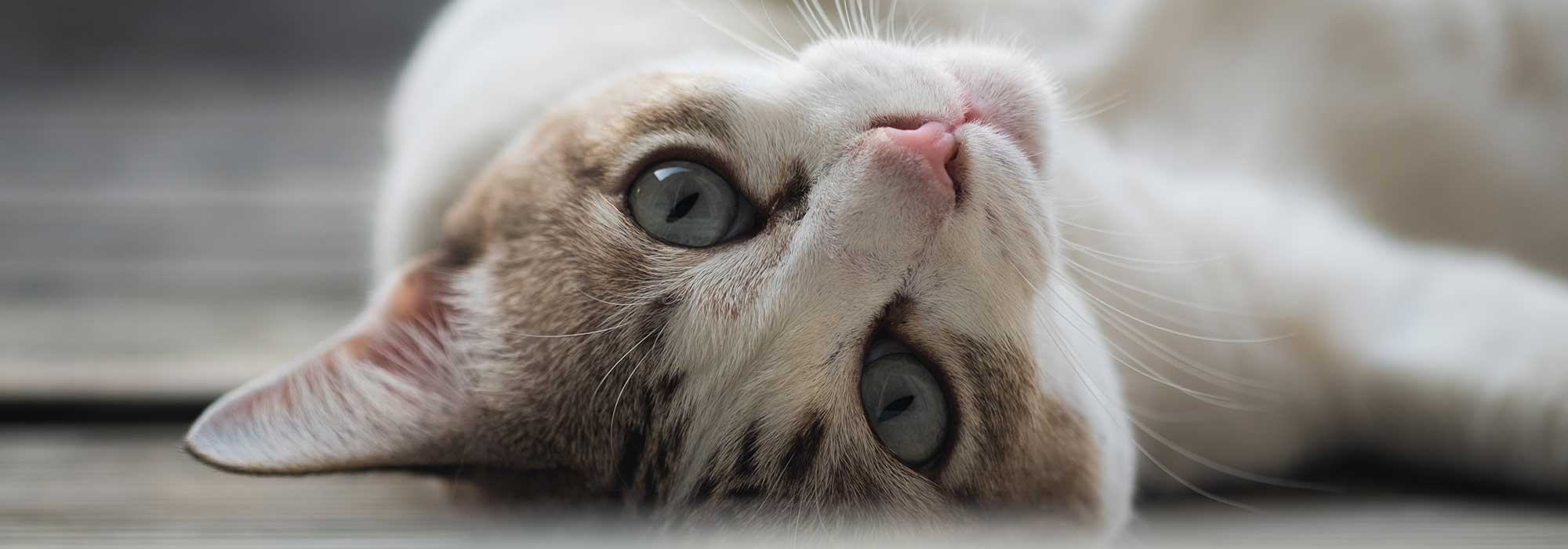Our Blog
Ins and Outs of Anal Sacs
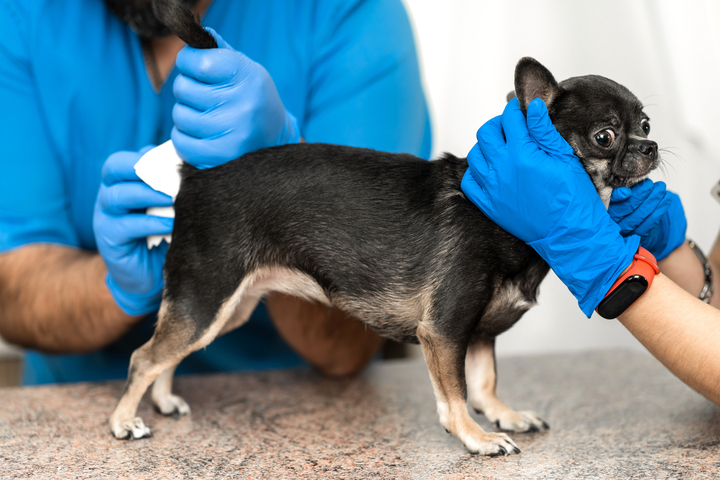
Does your dog regularly scoot its cute backside across the living room floor?
Do you occasionally notice an unpleasant, musky odor in the air or spot a brown streak on the carpet?
Have you noticed your pet obsessively licking its rear end?
If you’ve answered “yes” to any of these questions, your pet’s anal sacs may be to blame.
While not the most exciting topic, knowing what the anal sacs are and how to properly care for them is an important component of your pet’s care.
Continue…Understanding Old Dog Vestibular Disease
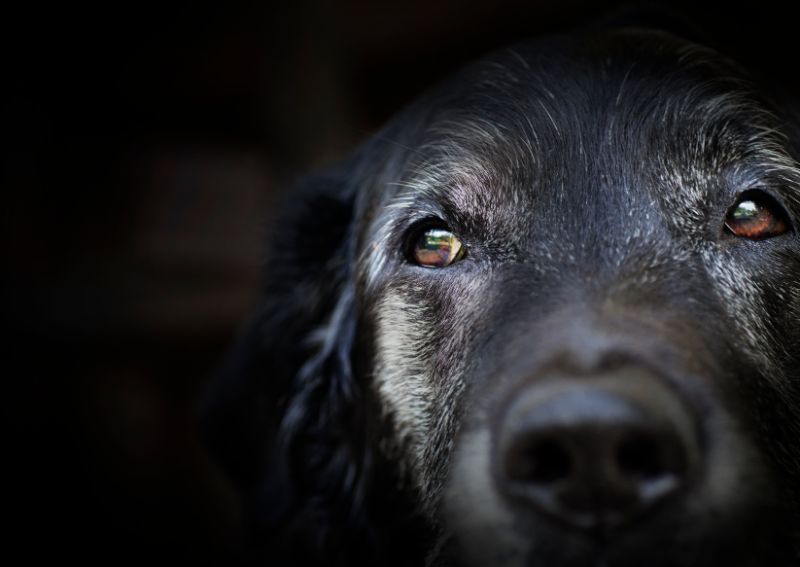
Anyone who’s ever suffered from vertigo or an inner ear problem understands the unsettling dizziness, loss of coordination and nausea that can accompany these types of conditions. Dogs can experience a similar condition known as canine vestibular disease.
There are several types of canine vestibular disease. Some may be due to serious causes, such as a brain tumor, neurological infection or other neurological disorder. However, there is a benign self-limiting type that affects mostly older dogs. Because of this, it is commonly referred to as ‘old dog vestibular disease’, which is the focus of this discussion.
The symptoms of old dog vestibular disease can be quite bewildering for any pet owner. At Lone Tree Veterinary Medical Center, we see this problem in many of our older patients, so we’d like to shed some light on this mostly benign form of canine vestibular disease.
Continue…The Do’s and Don’ts of Dog House Training
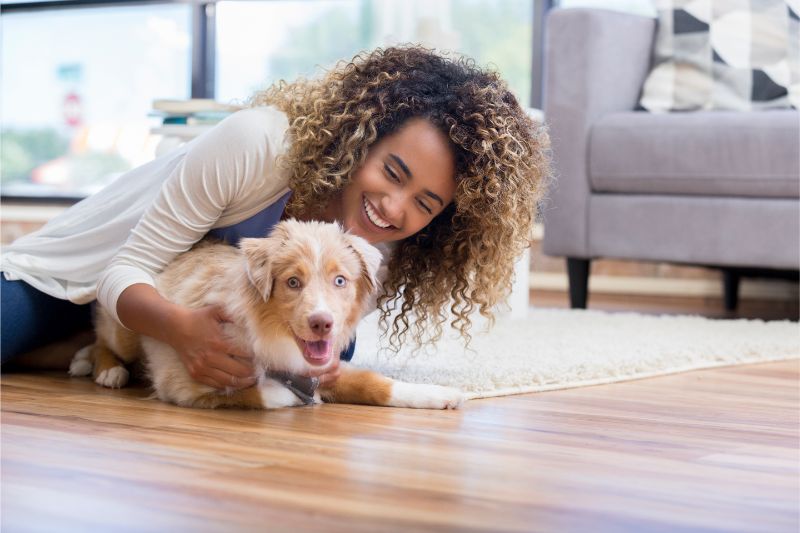
Bringing home a new puppy is one of life’s great joys, but the prospect of potty training your newest family member can be daunting. Even adult dogs can experience some setbacks when it comes to proper elimination, whether they are recently adopted or you’ve raised them from puppyhood.
At Lone Tree Veterinary Medical Center, we’ve seen a lot when it comes to the challenges of house training our dogs. So, with the help of our on-staff professional dog trainer, we’ve put together a few tried and true tips to help you navigate a smooth and stress-free transition with your special companion.
Continue…How to Keep Your Pet Fit During the Holidays

It probably comes as no surprise that “get healthier” is the most popular New Year’s resolution among Americans. Holiday meals and parties, cookies at the office and at Grandma’s house, and extra treats from friends and neighbors can add up over time, causing a run on gym memberships and diet cookbooks come January 2nd.
Pets, too, can suffer the ill effects of overindulgence, including the health and mobility consequences that go along with extra weight. Fortunately, it doesn’t have to be difficult to keep your furry friend fit and trim during the holidays.
A little bit of planning, a commitment to your pet’s well being, and the support of your Lone Tree Veterinary Medical Center team will go a long way toward making sure your best pal feels and looks its best all year long.
Continue…Home For The Holidays: Guide to Holiday Pet Adoption

Adopting a pet for the holidays sounds like a great idea. However, holiday pet adoption is a huge responsibility that should involve thought and planning. Below is our Guide for Holiday Pet Adoptions.
Pet Adoption 101
Whether its during the holidays or any other time, there are items to consider before adopting a pet.
Lifestyle
What will the new pet’s daily life look like? Will you have enough time to care for the pet, play with it, take it on walks, and provide training, or will everyone be out all day with activities occupying the evenings and weekends? A lonely and untrained pet can become a frustrated and destructive pet, especially, if it is a high energy breed that needs a lot of physical activity on a daily basis.
Choosing the Pet
Selecting the right pet is just as important as making sure all of the other factors line up. Each type of pet has a different set of needs and requirements for feeding, housing, exercise, grooming, socialization, and medical care. It’s important to do your research ahead of time.
It’s usually best to allow the recipient(s) to participate in selecting their pet of choice, rather than surprising them on the big day. Giving a stuffed dog or cat with a pet toy, a leash or carrier is an exciting way to surprise someone, especially kids, and allows the entire family to pick out the pet together at a later date.
Financial Means
Food, veterinary care, grooming, and training costs can really add up over the life of a pet. Ensure that the person receiving the pet can handle the additional financial responsibility of pet supplies, food, training, and veterinary care.
Living Situation
Where the pet lives is also an important consideration. While a small apartment may be ideal for a cat, it may not be so great for a 50 pound dog. You’ll need to be realistic about the indoor and outdoor space that will be available to share with a pet.
Will the New Owner Be A Child?
The ASPCA recommends waiting until children are between 10 and 13 years old before introducing the responsibility of a pet. However, regardless of the child’s age, an adult in the household must be fully committed to caring for the pet if the child cannot. Children should not be expected to take full ownership responsibilities, such as driving the pet to the veterinarian.
Commitment
Dogs live an average of 10-14 years, and cats can live 15-20 years. Pet adoption is a long term commitment that requires a thoughtful and a realistic look at one’s life. Shelters are full of pets that didn’t “work out”; you don’t want this to be how your pet ends up.
Continue…Does Your Dog Have What it Takes to Be a Therapy Dog?
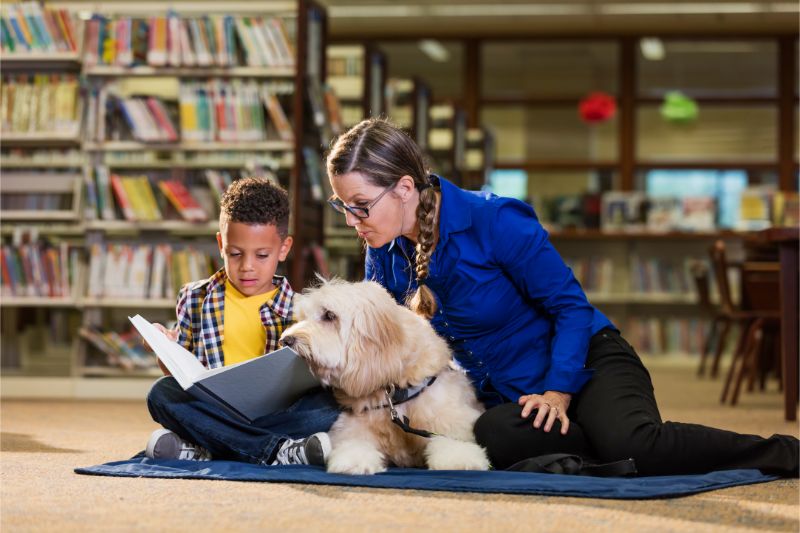
Do people routinely tell you how wonderful your dog is? If you are used to hearing “You have the best dog in the world!”, and you’re interested in sharing your dog with others who may benefit from your dog’s sweetness, perhaps you should consider therapy dog training! After all, what better way to spread the happiness and comfort that your dog brings than taking your sweet pup into a hospital or to a senior center where there are people who would appreciate a visit from a special four-legged companion?
Anyone who owns a dog knows how much this special bond adds to their quality of life, and there’s science to back it up. Recently, therapy dogs have been recognized by the scientific community for the health and healing benefits that they offer. Studies show that simply petting a dog stimulates the release of “feel good” neurochemicals, and contributes to lowered blood pressure, less depression, and an overall reduction in stress. There are numerous ways that therapy dogs can provide support, companionship, hope, and other health benefits to help people heal from both physical and psychological ailments.
Continue…When Is It Time for Pet Diapers?

Dealing with a dog or cat that can’t make it outdoors or to the litter box in time can be incredibly frustrating. Following your pet around, encouraging it to go in the appropriate spot, only to turn around and see a new puddle on the floor can leave even the most patient pet owner at wit’s end.
There are many possible causes for incontinence in pets, ranging from an infection or disease to a simple lack of proper house training. Exploring the potential cause is part of good preventive care and should be pursued. In cases where the cause cannot be treated, pet diapers may be the solution.
Continue…5 Things Your Cat Hates (and Wishes You’d Change!)

Cat owners know the unique joys and challenges of life with cats. You want the best for your cat, but sometimes figuring out what these notoriously fickle creatures want and need can feel like dancing on the tip of a pin!
Still, we adore cats at Lone Tree Veterinary Medical Center and we’ve seen a thing or two over the many years we’ve been taking care of our clients’ cats. We’ve come up with the top 5 things cats hate and what you, as a loving owner, can do about it!
The Reverse Sneeze: What It Is And When To Worry

You are minding your own business, when out of nowhere comes the odd, surprising, and utterly weird sound of honking or wheezy snorting from your dog. You run to your pet’s aid, only to discover that he or she is perfectly fine, standing there as though nothing has happened. But what did happen? Do you call us or drop everything and rush your pet in as an emergency?
It is likely that what your pet just experienced is known as paroxysmal respiration, more commonly called “reverse sneezing”. Hearing a reverse sneeze can certainly be alarming, but it’s often a normal occurrence for a dog or cat.
Continue…The Keys to Successful Airline Travel with Pets
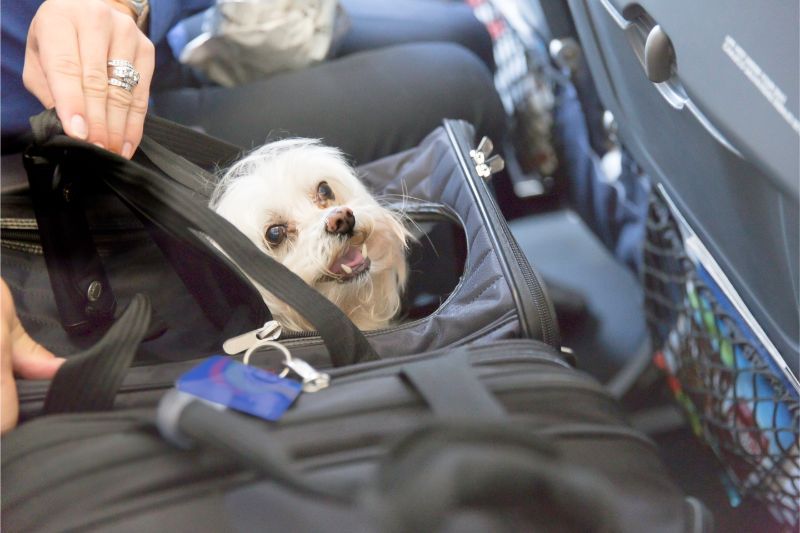
Traveling with a pet can be fun, but it also presents some significant challenges. Since we know airline travel is extremely stressful for pets, there are things you can do to make the big day go more smoothly and safely for them.
Airline travel with pets can be a lot of work. But with planning, preparation and a little help from your Lone Tree Veterinary Medical Center team, you and your pet will be jet-setting off into the sunset in good style.
Continue…
